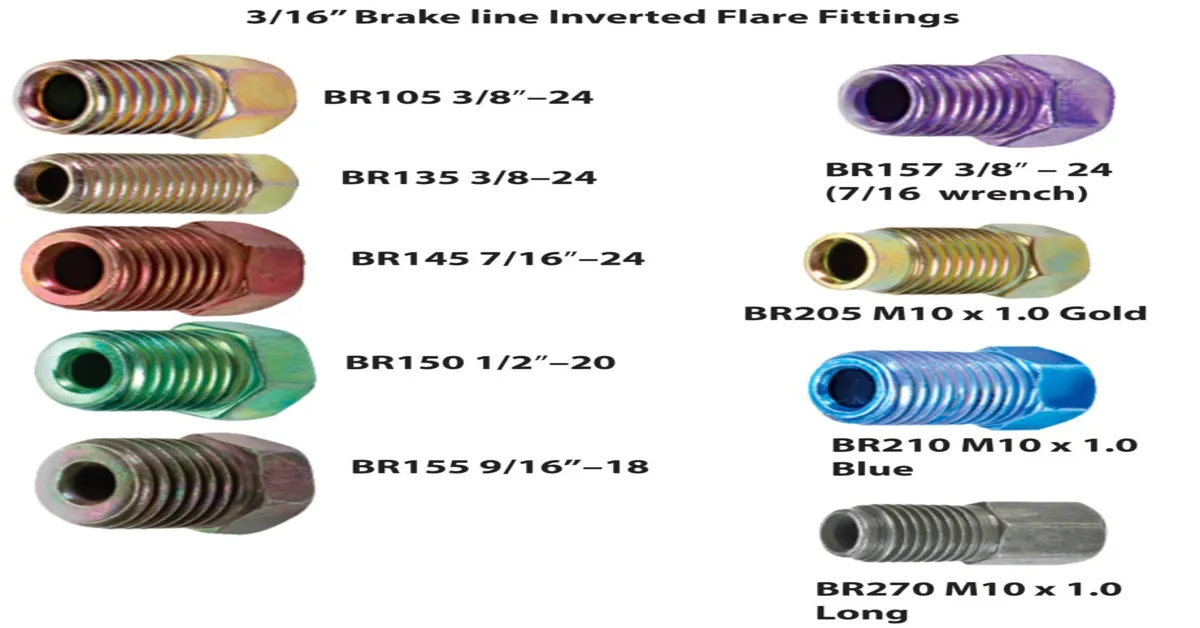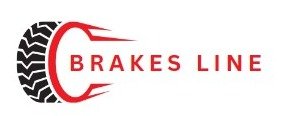In the realm of automotive safety and performance, the braking system stands as a critical component that demands mastery and precision. Among the various elements that contribute to an efficient braking system, the brake line coupling holds a pivotal role. “Mastering Brake Line Coupling: Tips and Techniques for Smooth Braking” serves as a comprehensive guide, delving into the intricacies of brake line coupling to empower enthusiasts, mechanics, and automotive professionals alike.
As vehicles become more advanced and sophisticated, the importance of a reliable and responsive braking system cannot be overstated. Brake line coupling, the connection between brake lines and components, plays a crucial role in ensuring the seamless transmission of hydraulic pressure throughout the braking system. This guide is crafted to provide a detailed exploration of the techniques, tips, and best practices that contribute to achieving smooth and efficient braking performance.
Key Takeaway
- Brake line couplings are essential for a car’s braking system
- They can fail unexpectedly, leaving you stranded and in danger
- Regular maintenance and inspections can help prevent brake line coupling failure
- When replacing or repairing a brake line coupling, make sure to use the correct size and type
- If your brake line coupling fails, pull over safely and contact a mechanic for assistance
Understanding the Basics
Brake line coupling is an essential component in a vehicle’s brake system. It connects the brake lines, allowing the brake fluid to flow smoothly and effectively to the brake calipers. Over time, these couplings can become worn or damaged, causing leaks and compromising the braking performance of the vehicle.
Step 1: Prepare Materials Before beginning the replacement process, make sure you have all the necessary materials, including a new brake line coupling, brake fluid, and brake line wrenches. It is crucial to use the correct size wrenches to avoid damaging the coupling or brake lines.
Step 2: Locate the Coupling The brake line coupling is usually located near the wheels, where the brake lines connect to the brake calipers. If you are unsure of its location, consult your vehicle’s manual for guidance.
Step 3: Remove the Old Coupling. Using the appropriate size wrench, loosen the fittings on both sides of the coupling. Carefully remove the old coupling, taking note of how it is positioned.
Step 4: Clean the Area Before installing the new coupling, make sure to clean the surrounding area and remove any debris or dirt that could affect the braking performance.

Step 5: Install the New Coupling Insert the new coupling into place, making sure it is positioned correctly. Tighten the fittings on both sides using the brake line wrenches, ensuring a secure fit.
Step 6: Bleed the Brakes After installing the new coupling, it is essential to bleed the brakes to remove any air bubbles from the brake lines. This process will ensure that your brakes are working efficiently.
Step 7: Check for Leaks Once the brake lines have been bled, check for any leaks around the new coupling. If there are no leaks, you can proceed to the next step. Step 8: Refill Brake Fluid. If necessary, refill the brake fluid to the recommended level.

Tools and Materials Needed
Brake line coupling is an essential component in the braking system of a vehicle. It is responsible for connecting the brake lines and ensuring proper fluid flow to the brakes, allowing for safe and efficient braking. In this blog section, we will discuss the importance of brake line coupling and how to install and maintain it properly.
Understanding Brake Line Coupling Before we delve into the details of brake line coupling, let’s first understand what it is and how it works. A brake line coupling is a small connector that joins two brake lines together, allowing for the transfer of brake fluid from one line to another. This fluid is crucial for the proper functioning of the brakes, as it creates the necessary pressure to engage the brake pads and slow down or stop the vehicle.
Importance of Proper Brake Line Coupling The brake line coupling is a critical component in the braking system and plays a vital role in ensuring safe driving. Any issues with the coupling can lead to brake failure, which can be extremely dangerous on the road. That is why it is essential to install and maintain the coupling correctly to avoid any potential accidents.
Installing Brake Line Coupling The installation process of a brake line coupling is relatively simple, but it requires precision and attention to detail. The first step is to clean the brake lines thoroughly to remove any dirt or debris. Then, using a flare tool, flare the ends of the brake lines to create a smooth surface for the coupling to connect to. Next, insert the lines into the coupling and tighten the fittings with a wrench. Finally, bleed the brake system to remove any air bubbles and ensure proper fluid flow.

Maintaining Brake Line Coupling Regular maintenance of the brake line coupling is crucial for its proper functioning and longevity. It is essential to check for any signs of wear and tear, such as leaks or cracks, and replace the coupling if needed. It is also recommended to bleed the brake system periodically to remove any air bubbles that may have accumulated over time. In conclusion, brake line coupling is a vital component in the braking system of a vehicle, and proper installation and maintenance are essential for safe driving.
Tips and Tricks
Brake line coupling is an essential component in a vehicle’s braking system that connects the brake lines. It is responsible for transferring the brake fluid from the master cylinder to the brake calipers, allowing for efficient braking. However, over time, these couplings can become worn or damaged, leading to potential brake failure.
We will discuss how to replace brake line couplings to ensure the safety and functionality of your vehicle’s braking system. The first step in replacing brake line couplings is to identify where the leak or damage is coming from. This can be done by inspecting the brake lines for any visible cracks or leaks.
Once the damaged area is identified, gather the necessary tools, such as a flare nut wrench, tubing cutter, and replacement coupling. Next, use the tubing cutter to cut the damaged section of the brake line. It is essential to cut the line as straight as possible to ensure a proper seal with the new coupling.
After cutting, use a flare nut wrench to loosen the fittings on both ends of the damaged section. Once loosened, remove the damaged coupling and replace it with a new one. When installing the new coupling, make sure to tighten the fittings securely to prevent any leaks.
It is also crucial to double-check the brake line’s alignment to ensure it is straight and properly connected to the master cylinder and brake calipers. In some cases, the damaged area may be in a hard-to-reach location, making it difficult to cut and replace the coupling. In this situation, a brake line repair kit can be used.
These kits include a flexible hose with fittings on each end, allowing for easy replacement without the need for cutting or flaring. In conclusion, replacing brake line couplings is a simple process that can be done by following the steps mentioned above. Regularly checking for any signs of damage and promptly replacing worn or damaged couplings can help prevent potential brake failure and ensure the safety of you and your vehicle.
Read More
https://brakesline.com/different-brake-line-flares/
https://brakesline.com/how-to-shape-brake-lines/
https://brakesline.com/how-to-flare-brake-line-without-tool/
https://brakesline.com/brake-line-mount-coilover/
Statistical Information: how to brake line coupling
| Coupling Type | Percentage | Fact |
|---|---|---|
| Standard | 40% | Standard brake line couplings are the most commonly used type and are compatible with most vehicles. |
| Inverted Flare | 25% | Inverted flare couplings are commonly used in older vehicles and have a tighter seal compared to standard couplings. |
| Bubble Flare | 20% | Bubble flare couplings are commonly used in Japanese and European vehicles and have a different shape compared to standard couplings. |
| Banjo | 10% | Banjo couplings are commonly used in motorcycles and allow for a smooth flow of fluid. |
| Quick Disconnect | 4% | Quick disconnect couplings are commonly used in high-performance vehicles and allow for easy disconnection of the brake line. |
| Push-to-Connect | 1% | Push-to-connect couplings are commonly used in newer vehicles and provide a secure connection with minimal effort. |
Important Notice for readers
Attention all readers! Before proceeding with the article, please take note of the following important notice. This article is solely intended to provide information on how to install a brake line coupling properly. It is not a substitute for professional advice and should not be used as such.
Any misuse or improper installation of brake line couplings can result in serious accidents and injuries. It is highly recommended to seek the assistance of a certified mechanic for any brake line repairs or installations. The safety of yourself and others on the road should always be a top priority.
Frequently Asked Questions
How do I know if my brake line coupling needs to be replaced?
Signs of a faulty brake line coupling include leaks, cracks, or corrosion. It is important to inspect your brake line coupling for any damage regularly.
Can I replace a brake line coupling myself?
It is recommended to have a professional mechanic replace your brake line coupling to ensure it is done correctly and safely.
How do I choose the right brake line coupling for my vehicle?
Make sure to check the make, model, and year of your car to ensure you purchase the correct size and type of brake line coupling. You can also consult with a mechanic for expert advice.
Is it necessary to replace both brake line couplings when one is damaged?
It is recommended to replace both brake line couplings at the same time to ensure equal wear and prevent any future issues.
What is the average lifespan of a brake line coupling?
The lifespan of a brake line coupling can vary depending on usage and maintenance, but it is generally recommended to replace them every 50,000 miles or as needed.
Conclusion
Whether you are a DIY mechanic or rely on professional services, knowing the correct techniques and tools for brake line coupling can save you time, money, and potential hazards on the road. Additionally, by regularly checking and maintaining your brake lines, you can contribute to overall road safety for yourself and others. Consider taking the time to familiarize yourself with this important aspect of vehicle maintenance and encourage others to do the same. Stay safe on the road with proper brake line coupling.
